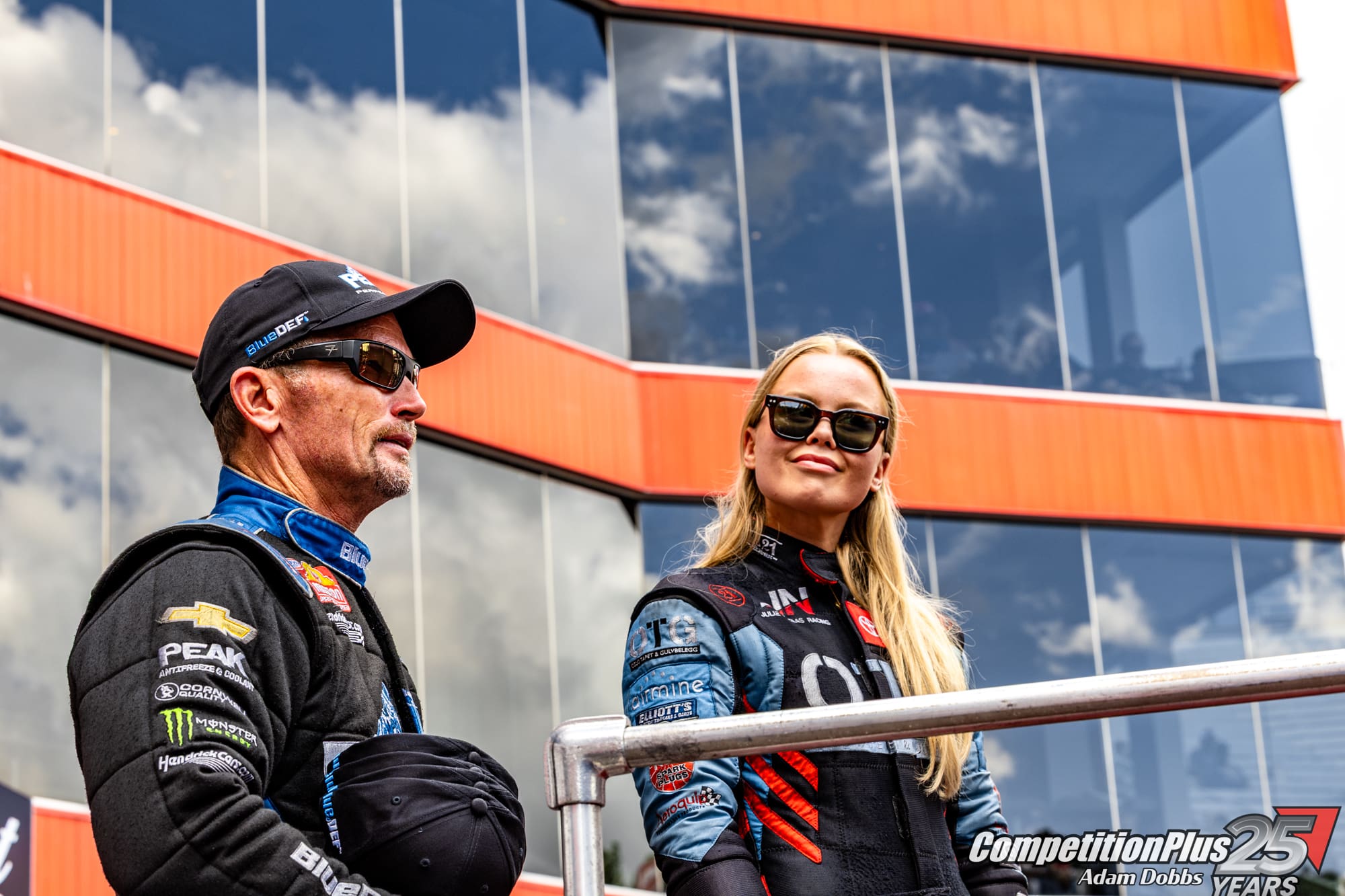 Pro Stock driver Eric Latino owns GESi, a leading producer of catalytic converters for OEM, aftermarket, and performance applications.
Pro Stock driver Eric Latino owns GESi, a leading producer of catalytic converters for OEM, aftermarket, and performance applications. Latino, now a co-owner of the KB Titan brand, has managed to marry his business into drag racing. He has been in the emissions industry for now 25 years.
The former Pro Modified driver, who is now trying his hand at NHRA Pro Stock, is working on making drag racing engines more environmentally friendly since he sees a day coming when leaded fuels wind down in drag racing.
Latino’s company supplies many of the leading aftermarket exhaust manufacturers with EPA-mandated catalytic converters, which makes those units EPA-compliant without sacrificing performance.
Latino believed that if he could make them efficiently for custom street cars, why not the race car he drives in the NHRA competition?
“I went into Greg Anderson and said, ‘Hey Greg, guy, I got an idea. I’m going to put a couple of catalytic converters in one of the Pro Stock engines,” Latino said. “And he goes, ‘Like hell, you’re going to do that. It’s going to restrict.”
Finally, Anderson reluctantly gave it a try.
“I laughed at first [with the suggestion],” Anderson admitted. “I absolutely laughed and said, ‘Well, why would I want to do that? It’s like strangling my neck. Why would I want to strangle my neck?”
“And he said, ‘I’m telling you it’s going to work. It’s not a problem. It’s not a hindrance. You trust me?”
“We did the [size] calculation based on exhaust flow, based on how much power the “engine makes,” Latino said. “The engine’s just a big air pump, and air in air out. Based on the flow, we designed a catalytic converter. It was five inches in diameter, nothing big. Cars have six and seven-inch cats.”
Anderson, who has seen a lot of things in his career as a racer and engine builder, entered uncharted territory.
“Lo and behold, it lost no power,” Anderson admitted. “He was right. I quit. I know nothing.”

 “We think it’s just the next swing into the whole race world that has this bad rap on emissions,” Latino said. “There’s a lot of talk about the sport; NASCAR went to EFI. They went to E85 fuels. If you look at F1, they’ve all gone to hybrid/E85 fuel. So the only way we can put converters on a Pro Stock engine and not have them poisoned is to have to run unleaded fuels. Today, all the race fuel is lead.”
“We think it’s just the next swing into the whole race world that has this bad rap on emissions,” Latino said. “There’s a lot of talk about the sport; NASCAR went to EFI. They went to E85 fuels. If you look at F1, they’ve all gone to hybrid/E85 fuel. So the only way we can put converters on a Pro Stock engine and not have them poisoned is to have to run unleaded fuels. Today, all the race fuel is lead.”
Currently, NHRA Pro Stock is the only professional car series in the world utilizing leaded fuels. FIA [European] Pro Stock now runs unleaded fuels. Latino has already presented NHRA with a proposal to legalize catalytic converters on Pro Stocker. NHRA must approve them for anyone to run one during their races.
“As soon as the NHRA gives us the thumbs up that we can switch over to unleaded fuels, I think that’s going to be the big push on putting catalytic converters on these Pro Stock cars,” Latino said.
Latino believes significant strides have been made in technology with unleaded fuels to make the switch less challenging than it used to be. He confirmed his GESi units are already installed on many of the leading aftermarket street exhaust units to make them EPA-compliant.
“[NHRA] was very receptive,” Latino said. “I talked to the tech department. I said, ‘Hey guys, what do you think about putting catalytic converters on a Pro Stock car so we can go out there and tell the world that every car that’s performing that’s performing like the cars being marketed to the world are EPA compliant?”
“What message does that give the young generation? Because the biggest fear always is it’s not our future; it’s our kid’s futures, and they’re being educated so much about global warming and all the issues with greenhouse gases. Well, here’s one way to eliminate that from this car. Today, I wouldn’t doubt if 75-percent of the race cars that perform at any NHRA race are EFI.
“They’re all changing. Holley came out with a great system. Most sportsman cars have gone to electronic fuel injection. If you can maintain the air-fuel ratio and keep it at 12:9 to 13:1, that converter will live without any issues.


































